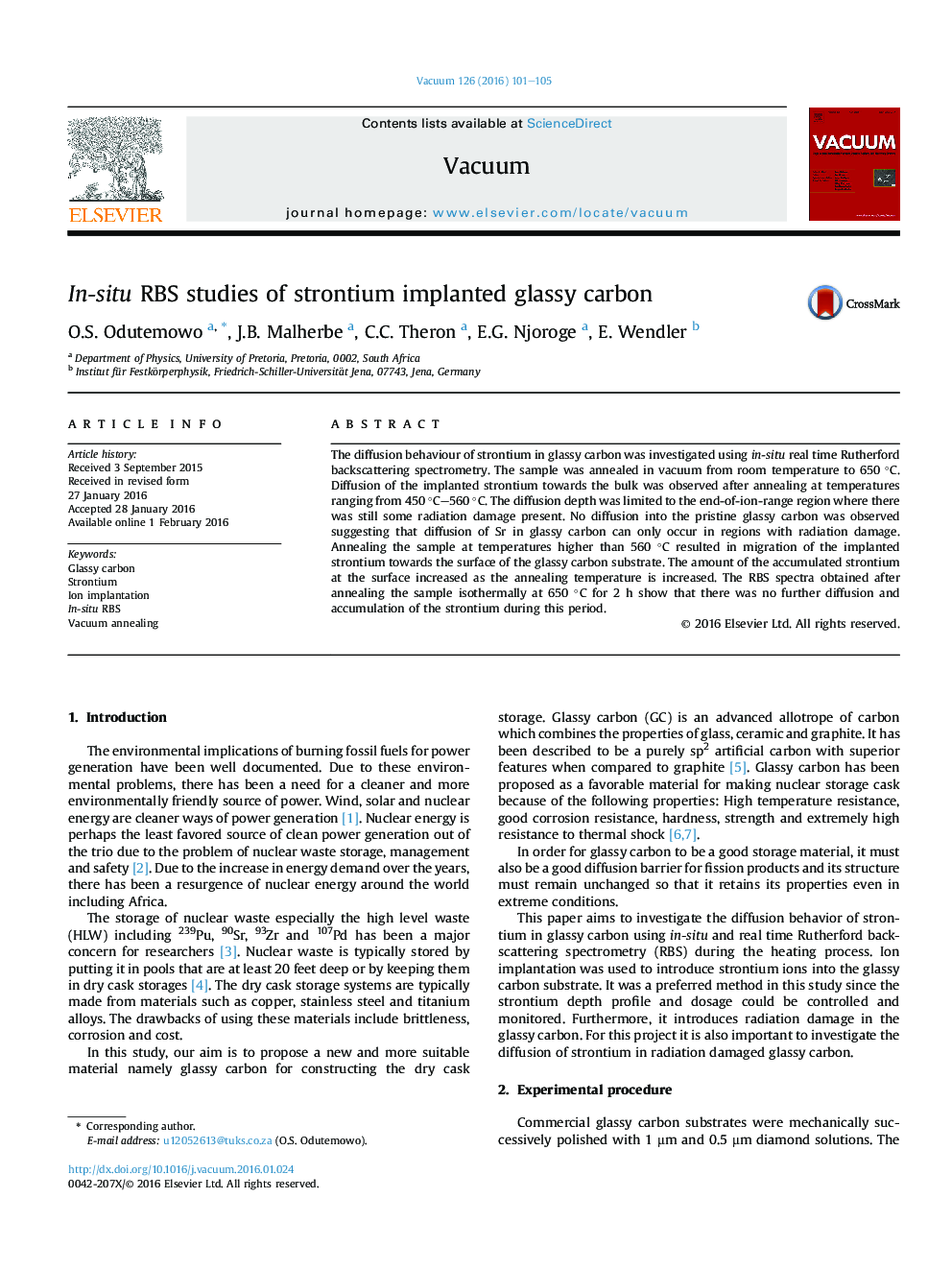| کد مقاله | کد نشریه | سال انتشار | مقاله انگلیسی | نسخه تمام متن |
|---|---|---|---|---|
| 1689224 | 1518944 | 2016 | 5 صفحه PDF | دانلود رایگان |

• Glassy carbon samples were implanted with 200 keV Sr ions at room temperature to a fluence of 1 × 1016 Sr+/cm2. The implanted samples were annealed in vacuum at temperature ranging from 23 °C–650 °C and in-situ real-time RBS analysis was carried out during the annealing process in order to investigate the diffusion behaviour of the implanted strontium.
• The vacancy distribution profile derived from SRIM simulation shows that the radiation damage introduced by ion bombardment is concentrated towards the surface region of the glassy carbon substrate.
• During low temperature annealing, the Sr atoms moved deeper into the bulk of the glassy carbon substrate due to the presence of vacancy and interstitial defects in the surface region of the glassy carbon. Migration of the implanted Sr towards the surface of the glassy carbon was observed at temperatures ranging from 560 °C–650 °C.
• Migration of the implanted Sr towards the surface of the glassy carbon was observed at temperatures ranging from 560 °C–650 °C. The migration towards the surface was accompanied with segregation of Sr towards the surface. The segregated strontium was retained on the glassy carbon substrate and no loss of strontium was recorded.
• The diffusion of Sr was limited to the damaged region of the glassy carbon and no diffusion into the pristine glassy carbon was observed. The results of the study show that glassy carbon is an excellent containment material for radioactive strontium.
The diffusion behaviour of strontium in glassy carbon was investigated using in-situ real time Rutherford backscattering spectrometry. The sample was annealed in vacuum from room temperature to 650 °C. Diffusion of the implanted strontium towards the bulk was observed after annealing at temperatures ranging from 450 °C–560 °C. The diffusion depth was limited to the end-of-ion-range region where there was still some radiation damage present. No diffusion into the pristine glassy carbon was observed suggesting that diffusion of Sr in glassy carbon can only occur in regions with radiation damage. Annealing the sample at temperatures higher than 560 °C resulted in migration of the implanted strontium towards the surface of the glassy carbon substrate. The amount of the accumulated strontium at the surface increased as the annealing temperature is increased. The RBS spectra obtained after annealing the sample isothermally at 650 °C for 2 h show that there was no further diffusion and accumulation of the strontium during this period.
Journal: Vacuum - Volume 126, April 2016, Pages 101–105